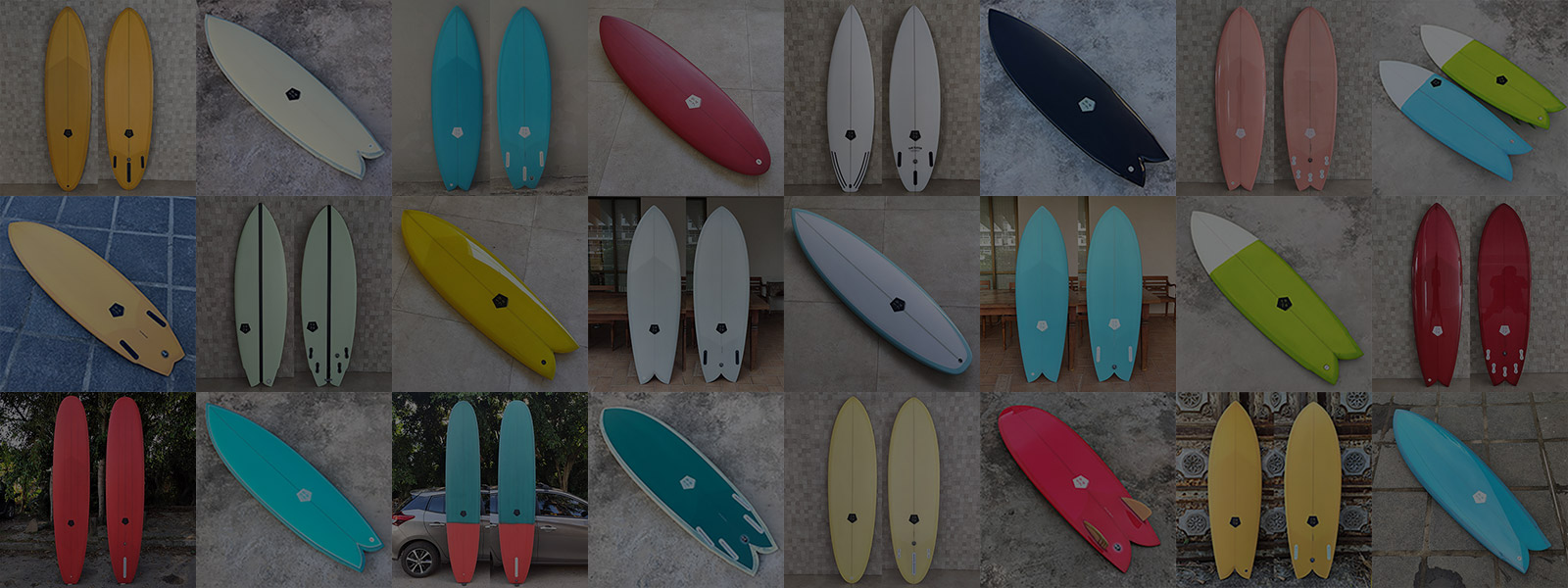We offer shipping
We offer shipping
We ship to Portugal and Europe

É extremamente IMPORTANTE esperar pelo menos uma semana após a prancha ser fabricada para a resina curar corretamente, assim que o cheiro de resina desaparecer signifca que a resina está curada e a prancha pode ser usada.
Recomendamos colocar a prancha dentro de uma capa de proteção durante uma noite e abrir no dia seguinte, se ainda tiver cheiro de resina o cliente deve esperar ela sumir. Outra forma para notar se a prancha ainda esta curando é se aproximar bem do copo de encaixe da prancha e notar se ainda tem odor de resina.
Se a prancha for usada antes da resina curar ela pode amassar e quebrar com facilidade, não nos responsabilizamos por amassados e danos ocorridos durante este período.
O sol e calor são inimigos da construção da prancha, em todas elas, caso atinjam determinada temperatura a resina pode ficar mole e maleável, e pode deformar, deslaminar (a fibra de vidro separa do bloco), etc.
Assim que a temperatura baixar a resina volta a endurecer, porém caso ela tenha amasssado ou deformando, ela ficará com este formato. Isto pode acontecer em temperaturas que variam de 60 graus para resina Poliéster e 50 graus para resina Epoxy.
Estas temperaturas são FACILMENTE alcançadas dentro de um carro em um dia de verão, por isso:
Não DEIXE a sua prancha:
It is extremely IMPORTANT to wait at least one week for the resin to cure after the surfboard is glassed, as soon as the resin smell disappears off the board and near the fin plugs it is ready to use.
If the surfboard is used before the resin is cured it can damage or break easier, we do not account responsible if that happens during this period.
Sunlight & heat are direct enemies of surfboard construction. All resin has what’s called a Glass Transition Temperature – which is the temperature at which the normally solid-state resin that is saturating the fiberglass cloth surrounding the foam core of your surfboard becomes so hot that it can become soft and malleable, and can therefore waffle, deform, delaminate (fiberglass seperates from the foam), etc. Once the resin cools back down below the glass transition temperature, it will reharden – however, to whatever deformed shape it became when it was too hot. While these temperatures will differ from manufacturer to manufacturer, the approximate glass transition temperatures for polyester resin is around 140 degrees F and epoxy resin is only 120 degrees F. Those temperatures are EASILY REACHED inside a car on a hot summer day. So, simply put:
Do NOT leave your board: